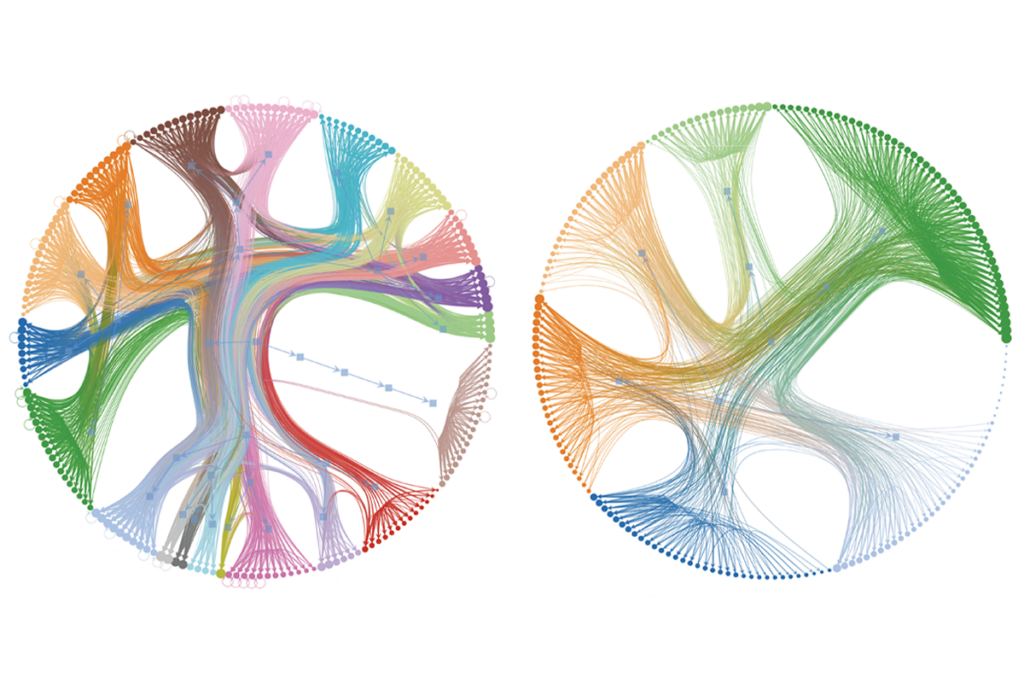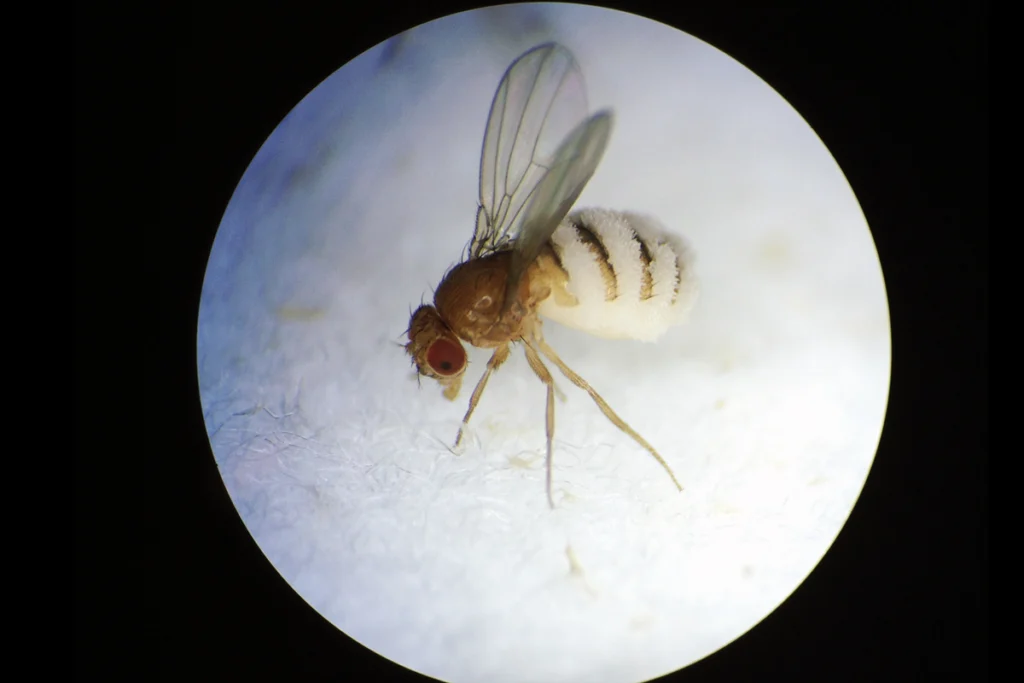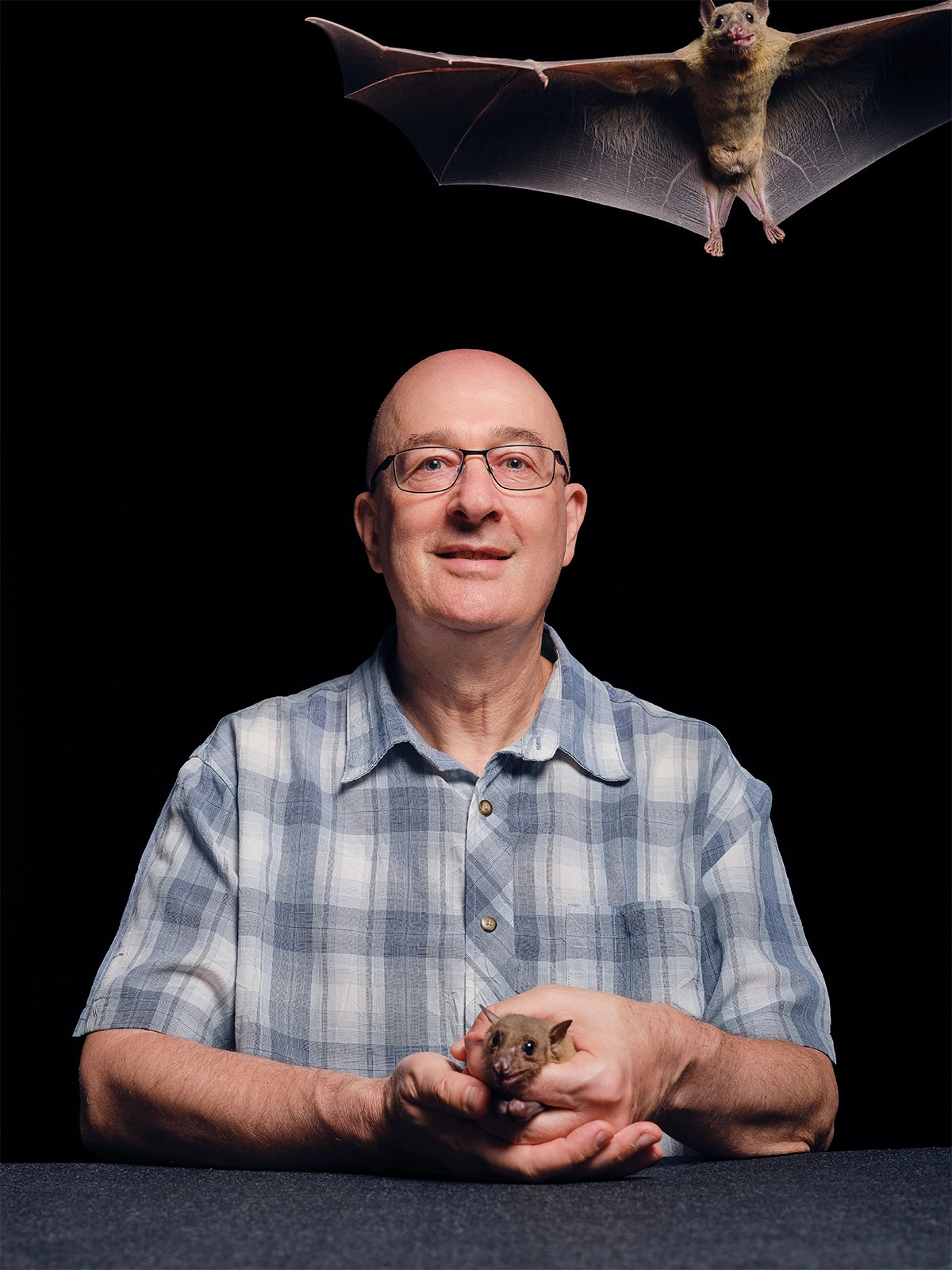
Diving in with Nachum Ulanovsky
With an eye toward realism, the neuroscientist, who has a new study about bats out today, creates microcosms of the natural world to understand animal behavior.
Nachum Ulanovsky didn’t hesitate. He dove straight into the current off the shore of Tanzania’s Latham Island and swam 40 meters toward a bat floating on the surface.
The Egyptian fruit bat wore a neural logger with an attached GPS tracker and had been released to collect preliminary flight data. When the animal fell into the open water, five years of planning and about $7,000 of equipment fell with it. Ulanovsky couldn’t bear that. When he reached the bat, he held it above the water with one hand and paddled back to shore.
“I didn’t even think about what I was doing,” he remembers. It wasn’t until he was standing on the sand again, wet clothes stuck to him, that he realized he had not taken his phone from his pocket.
The bat—and the logger, and the data in it—survived. The phone did not.
Ulanovsky was happy to accept this trade-off.
For about a month in 2023, Ulanovsky and his team took over 7-acre Latham Island to study the brain activity of bats. This followed years of preparation, but his team couldn’t anticipate everything. “You can plan for many things for the animal to do,” says Saikat Ray, a postdoctoral researcher in Ulanovosky’s lab. “But because the animal is free to do what it wants, it will do what it wants to do.”
It was not the first time Ulanovsky, professor of brain sciences at the Weizmann Institute of Science, had created a world for his experiments—he had already built rooms that resembled caves and constructed a 200-meter tunnel in which his bats could freely roam while he tracked their brain activity. That earlier work led to paradigm-shifting discoveries about how the brain navigates and relates to the real world, says Eric Warrant, professor of zoology at Lund University and past president of the International Society of Neuroethology.
But the work on Latham Island was Ulanovsky’s most complex and expensive undertaking yet, costing more than $1 million. The results, published today in Science, contain the first single-cell neural recordings in behaving mammals outdoors and confirmed that head direction cells in the bat serve as a reliable neural compass, among other findings.
But maybe more importantly, the paper shows what can be learned when science takes tracking technology “into the wild,” says Iain Couzin, director of the Max Planck Institute of Animal Behavior. “I think it’s the start of something really big, being able to do this.”
U
lanovsky became interested in bats while in a Ph.D. program in computational neuroscience at Hebrew University. In the summer of 2002, his wife—an environmental scientist who works as a consultant—told him about a course on the ecology of desert bats, and Ulanovsky saw a chance to learn more about the animal.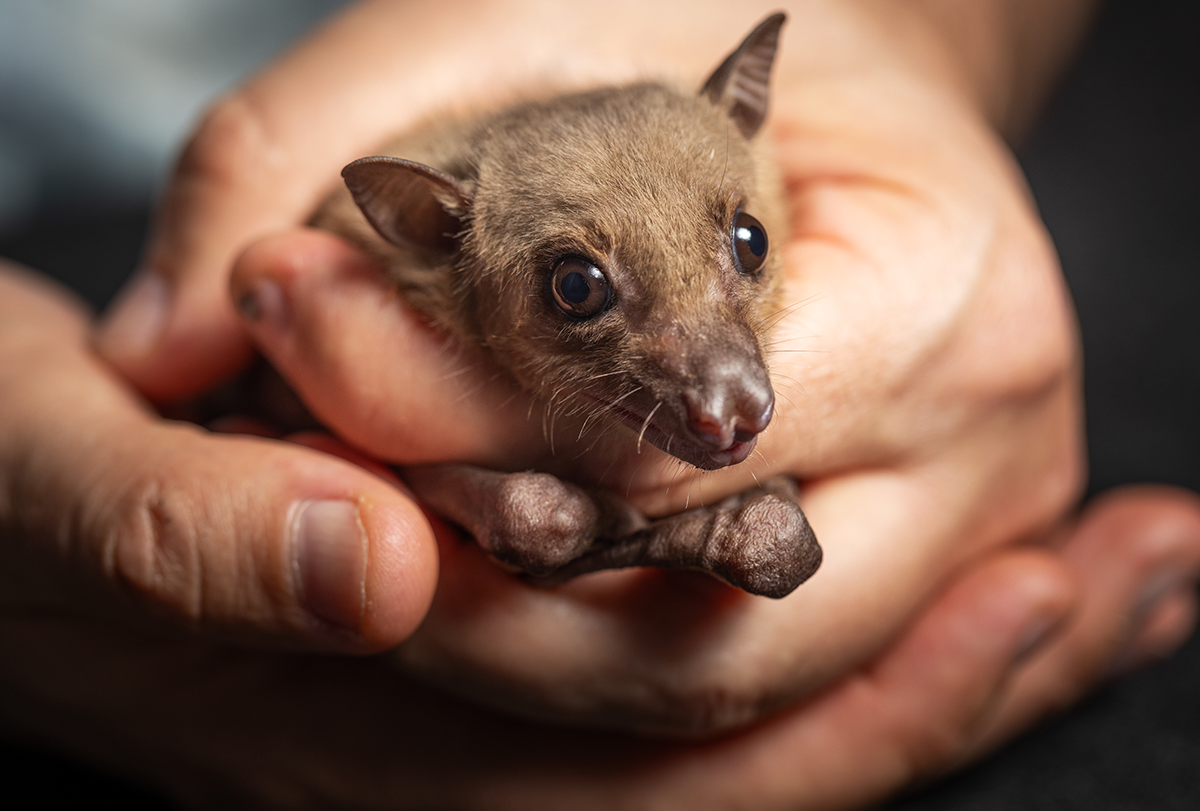
It wasn’t until he was studying under Cynthia Moss at the University of Maryland, College Park (today she is professor of psychological and brain sciences at Johns Hopkins University) that he worked with bats. He built from scratch the infrastructure to record from the bat hippocampus and showed that bats’ brain waves might be different from rodents’.
In 2007, he moved with his wife and three children to Rehovot, Israel, for his position at the Weizmann Institute of Science—a homecoming of sorts: His parents emigrated to Rehovot from Moscow when Ulanovsky was just 4 months old. There he had the resources to truly stretch his bat studies. He created small, dark rooms for his experiments and discovered grid cells in bats, found that place cell fields look different in 3D than in 2D, realized that head direction cells support 3D navigation and that social place cells encode the position of other flying bats.
Next, he proposed building a 200-meter-long tunnel to further investigate how place cells behave. Ulanovsky’s work showed that the bat hippocampus in a larger space exhibits a multiscale code—in other words, neurons have multiple place fields that range from small to large, a finding previously invisible to researchers studying bats in small laboratory environments, Ulanovsky says. And it showed that when faced with an in-air collision, a bat’s cells quickly shift from encoding its own position to encoding the distance between itself and another bat.

These setups taught him how the constraints of the lab can obscure the truth about the brain and behavior. The findings also highlighted the importance of ecologically valid research when studying the brain, Warrant says.
Still, Ulanovsky kept getting the same question from animal behavior researchers: Why didn’t he just record from the bat brain in the wild?
The problem, he says, was that he hadn’t figured out how. That would take a trip to Australia, some scuba diving and half a decade of strategizing.
U
lanovsky describes himself as “hands on” in the lab. “I want to sit with [the students] and to see the data and discuss,” he says. “I don’t want to talk about the data once in three months.”His team agrees. Even after 18 years of running the lab, Ulanovsky remains involved in the smallest aspects, says Yossi Yovel, a former postdoc of Ulanovsky’s, now professor of zoology at Tel Aviv University. He is “very much into the details—I would say even too much into the details.”
Liora Las, a staff scientist in Ulanovsky’s lab who has worked with him for 14 years, says that his interest in the details can come across as micromanaging, with Ulanovsky wanting to know the specifics about experiments at all times. And Yonatan Aljadeff, assistant professor of neurobiology at the University of California, San Diego, who spent a year in Ulanovsky’s lab in 2019, says that when they worked together, it was common to get messages asking about an experiment at 11 p.m.
Aljadeff says the demands are simply a byproduct of Ulanovsky’s great curiosity for science. To that, Ulanovsky nods his head. His experiments have all followed his natural curiosity about the world, he says, and sometimes so does his downtime. He has hiked in Patagonia, sea kayaked in Greece and Croatia, and honeymooned in Kenya, in part to learn more about biodiversity. And in the summer of 2023, he and his family traveled to Madagascar, where 92 percent of the mammals do not exist anywhere else in the world.
While they were hiking in a state park there, a group of lemurs suddenly came crashing down a tree at once. Clearly something was happening. Ulanovsky looked up and spotted a bird of prey wheeling in the blue sky above the canopy. Yet, he noticed, not all the lemurs had gone to the ground for safety; some stayed in the high branches to watch for an attack. That fascinated Ulanovsky.
“I was just standing there mesmerized to see this textbook alarm-call reaction,” he says. “It’s one thing to see it in a David Attenborough documentary or to read it in a textbook. Another thing is to see it from literally 10 feet.”
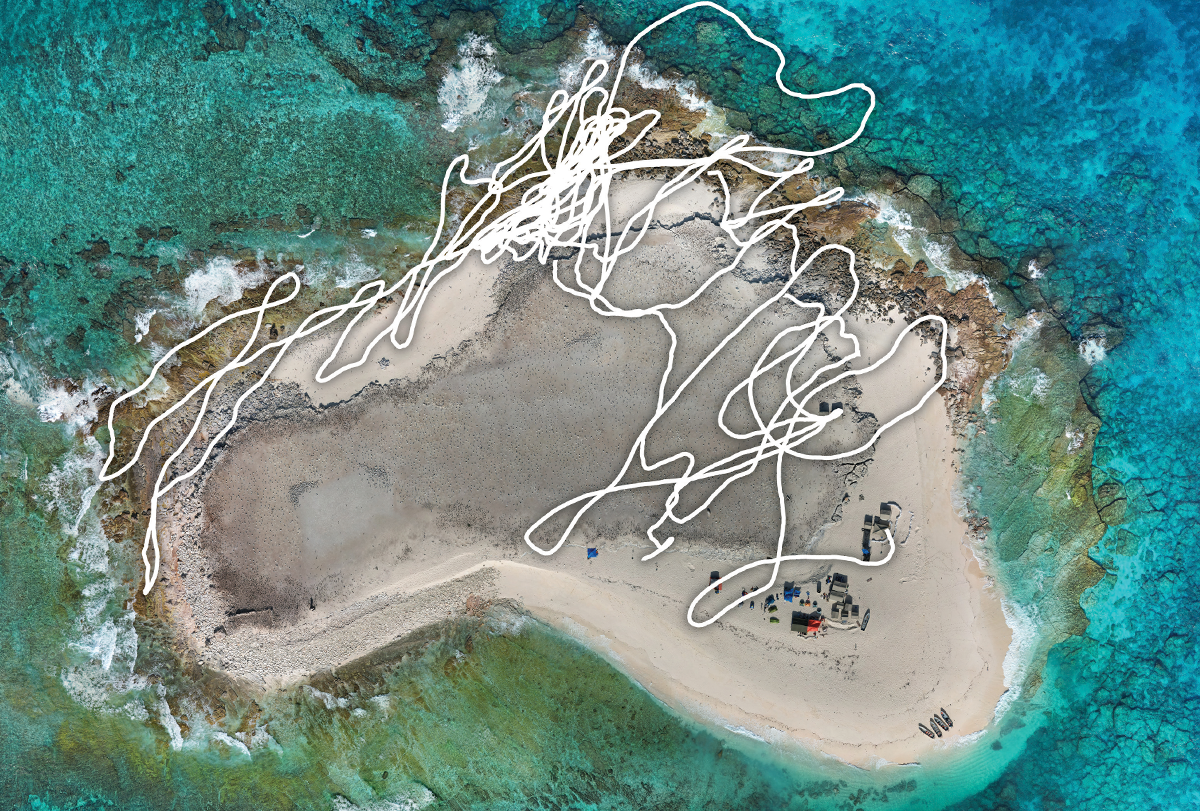
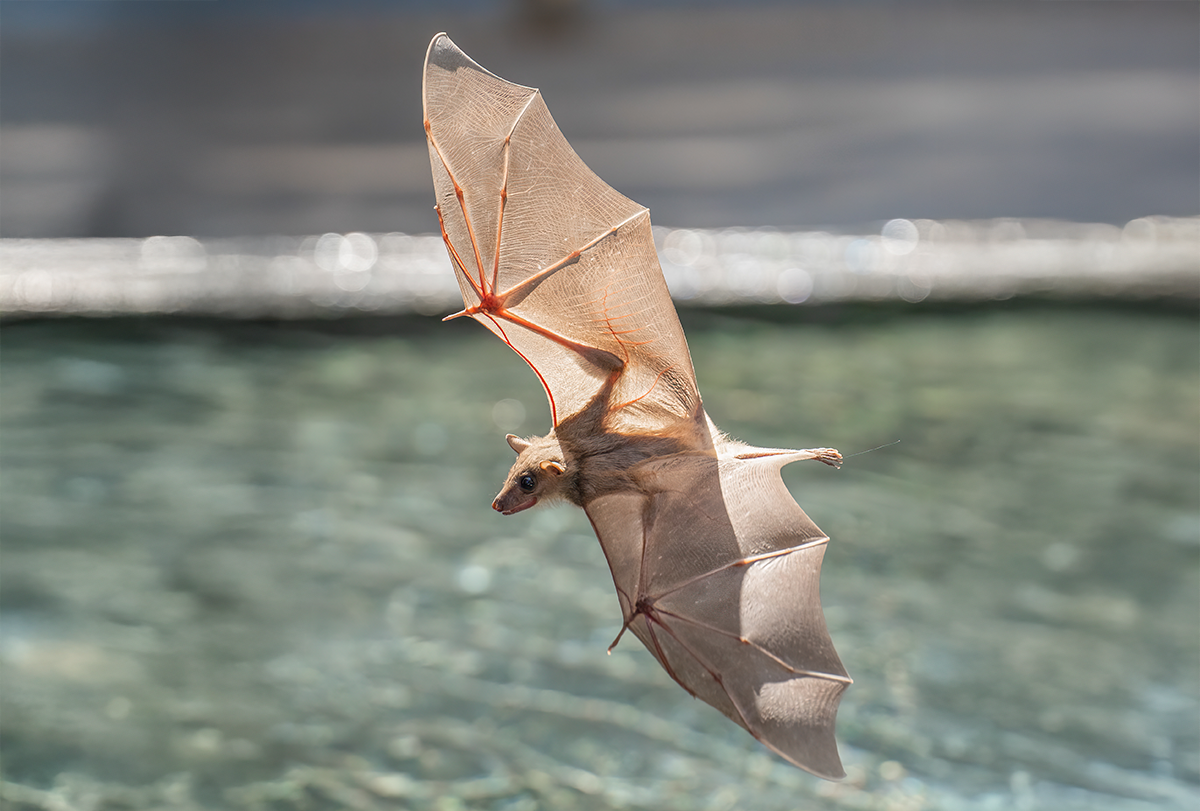
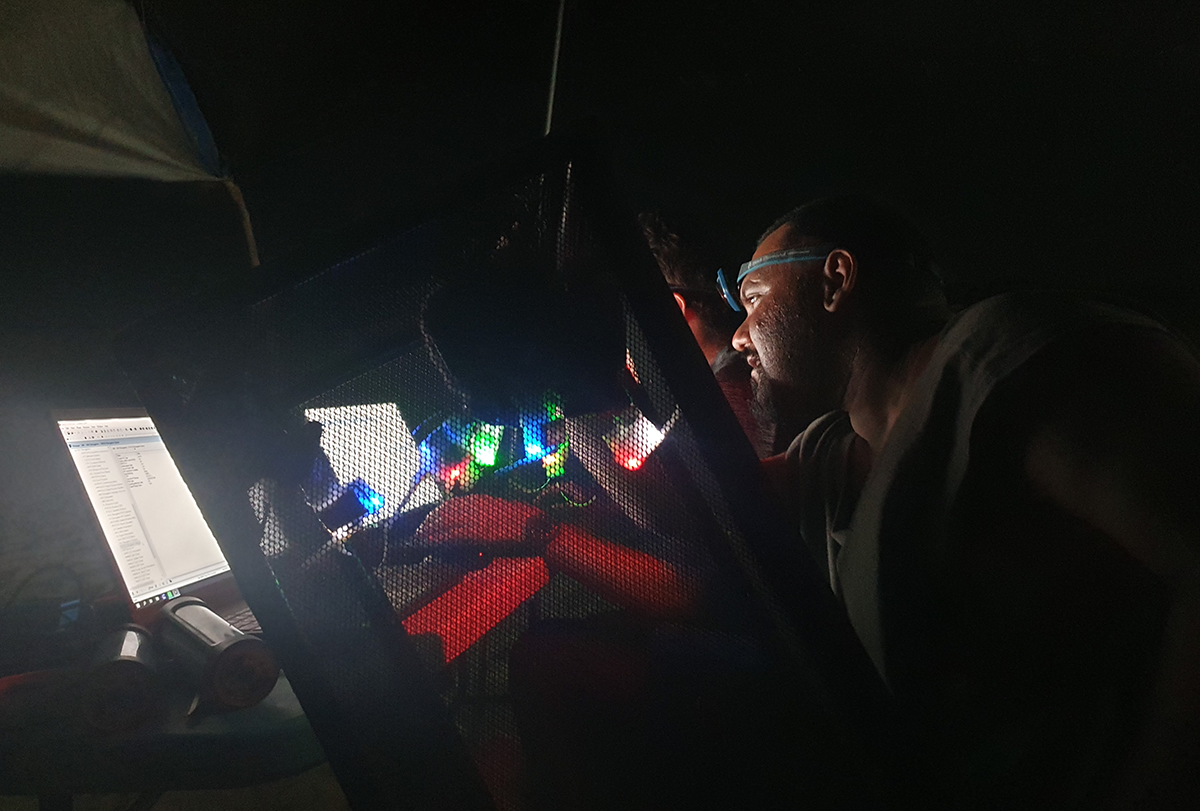
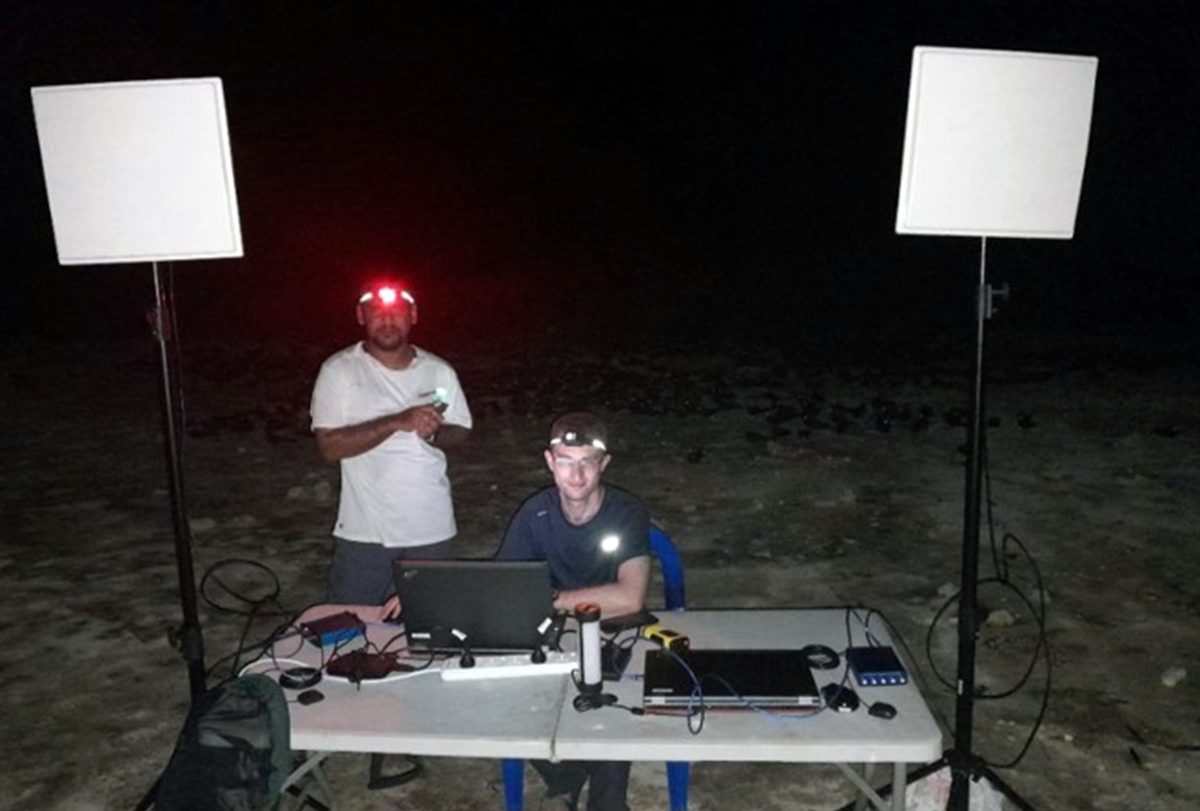
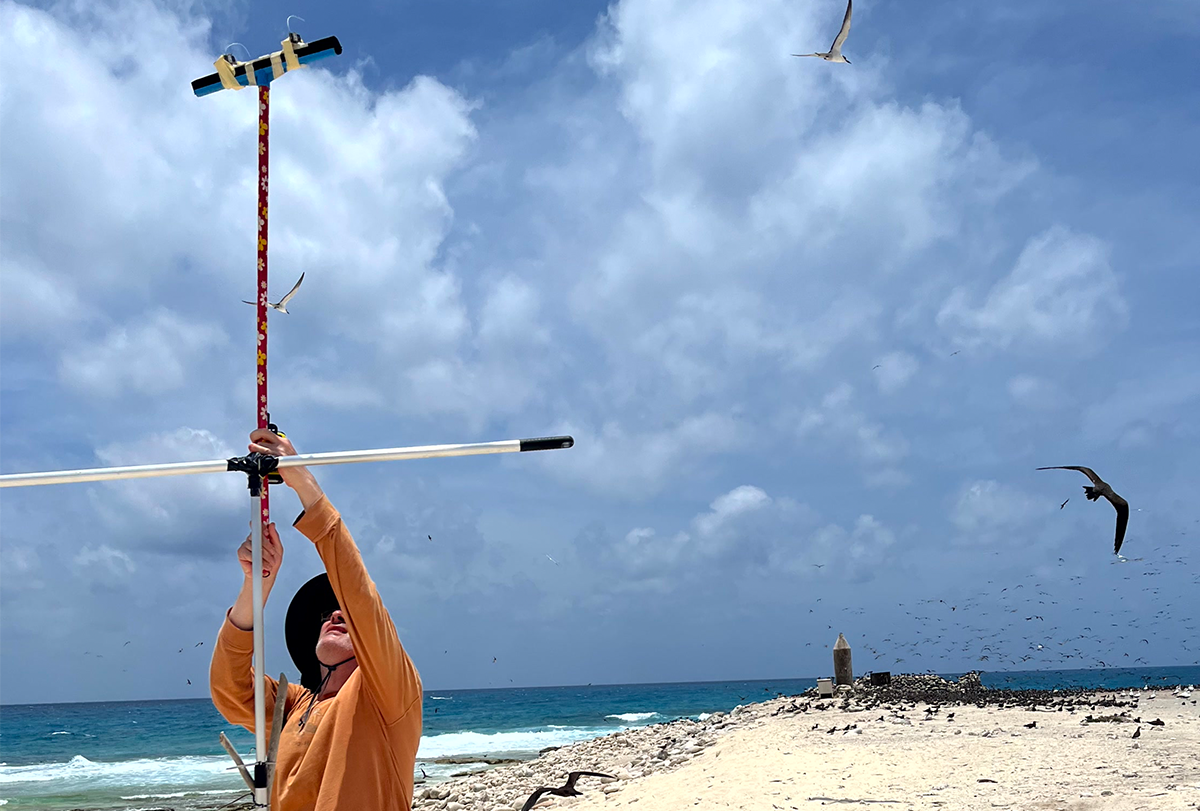
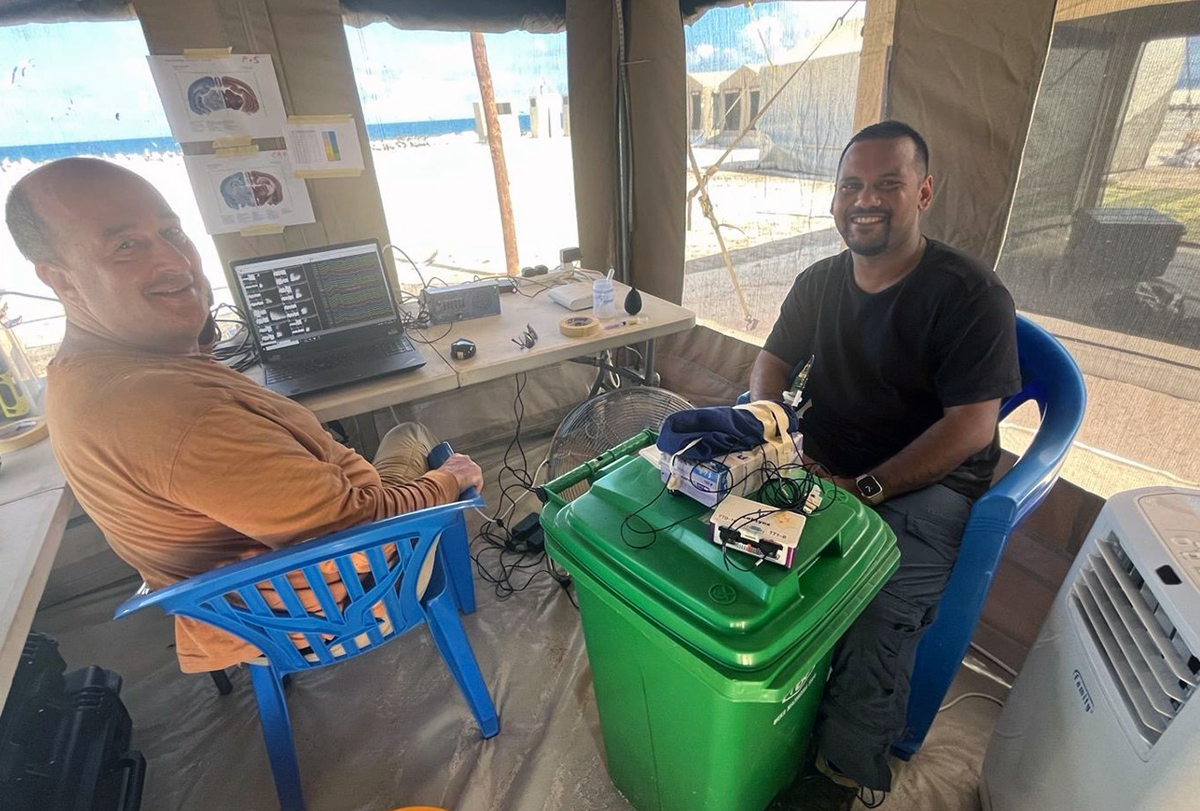
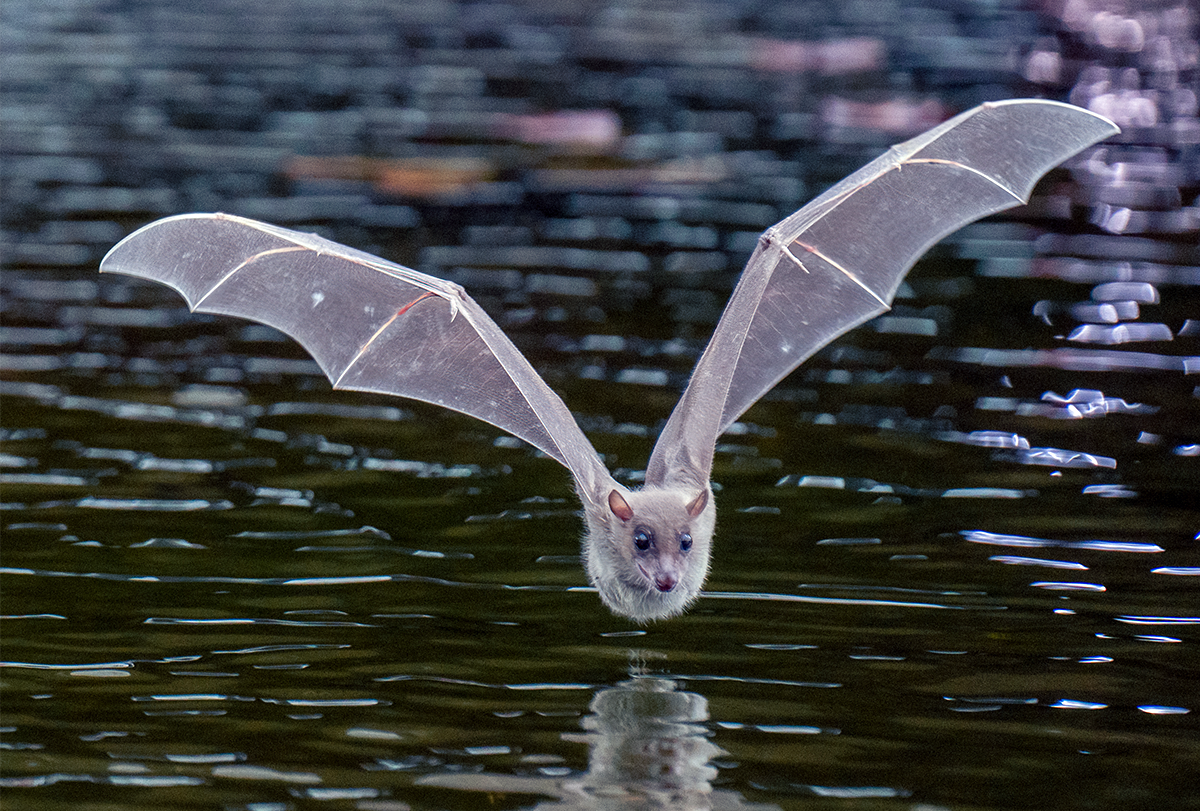
T
he path to Latham Island began in 2018. While attending the Congress for Neuroethology in Brisbane, Australia, Ulanovsky learned about a study investigating how rats navigate an island. He read the paper while flying to Lady Elliot Island, off the coast of Australia, where he planned to scuba dive with Yovel.The paper got him thinking about how an island could let his bats fly free but still contain them. He spent the next four days investigating the Great Barrier Reef, and in the evenings, he sat in one of the tall chairs at the hotel bar with Yovel, watching the waves and planning.
Ulanovsky returned from Australia and began his search. He reached out to government officials of a handful of islands in the Pacific and asked to conduct experiments but was rejected. Then, while browsing Google Earth in early 2022, he came across Latham Island. It checked every box on his list: far from the mainland, uninhabited, unprotected. Within two months, he had secured permits from Tanzania’s Ministry of Education, Science and Technology to transport Egyptian fruit bats to the island and study them.
That left the hardest part—the logistics of conducting the experiment, including how to send reagents and instruments to Tanzania, how to access a satellite connection and how to add a high-quality GPS tracker and an altimeter to the neural logger.
In February 2023 the team flew to Tanzania, where they captured 10 Egyptian fruit bats and outfitted them with recorders. Then they sailed more than five hours to the island, dolphins surfacing alongside the boat. As they approached the island, Ulanovsky could see it was treeless, and he expected it to be bleak. Yet the team found it was teeming with crabs, birds rose into the air and landed again, and the geography included small lagoons and rocky cliffs. “I was struck by how beautiful it is,” Ulanovsky says.
They erected safari-style tents for shade and strung hammocks between poles. Supplies were scheduled to arrive every three or four days. They set up a generator to cook meals and power their equipment and hired a crew of locals to help keep everything running smoothly.
When the experiment began, the team spent the day positioning the electrodes on the bats they planned to study that night. They drank coffee in the evening and waited for midnight. By 1 a.m., they were ready to release the first bat for its hour of flying. Then another, and another, until four had been sent into the night sky and retrieved, and by then the morning sun was showing on the horizon.
If the night’s work was a success, the team poured celebratory glasses of amarula, a cream liqueur from South Africa, before going to bed for a few hours of sleep.
The team had anticipated many problems—they covered their electronics with parafilm as protection from sea spray, for example—but still hiccups arose.
The adapters they had brought from Israel would not work with the available oxygen tanks, and they had to commission a shop in Tanzania to manufacture new ones. They were dependent on a contact in Tanzania to send over anything they suddenly needed—including a pair of eyeglasses and a new phone to replace the one Ulanovsky ruined in the ocean.
“It was constant problem-solving all the time,” Ulanovsky says. To pull off a study of this magnitude, he learned, “you always have to be on the alert.”
T
he time on the island, with the disruptions and “not knowing whether the experiments are going to work or not,” was enough to make Ulanovsky anxious. But he had been thinking about studying bats in the wild for almost two decades, and he had to believe this would be worth it.When the weather turned, they packed up and went back to his lab. They had split the recordings across three different brain areas, and they worried they might not have enough data to draw reliable conclusions about any one area. That turned out to be the case, so they returned to Latham Island for another three weeks in February 2024 and got what they needed.
They first analyzed the presubiculum. There, about 25 percent of the neurons had head-direction tuning, they found, firing in response to a specific head orientation—a proportion similar to that seen in lab studies, which confirmed that some features exist in both the lab and the wild. Neuroscientists had suspected that head direction cells could serve as a neural compass, but some findings had shown that the tuning of the cells could change with spatial cues, which would make them unreliable for navigating in the wild.
But the study backed up the compass idea: Head direction cells fired to the same head orientation no matter where the bat was on the island, showing that the tuning was global over large areas. Because the tuning remained stable before and after moonrise and with or without cloud cover, it showed the cells were immune to celestial cues and therefore could be a reliable compass.
Because the bats were not native to the island, the experiment also shed light on how those maps form. On the first couple of nights, neurons seemed lost, firing no matter the bat’s orientation. But as the nights passed, the neurons responded more consistently to just one orientation, indicating that their direction maps became stabilized with learning. The team is currently analyzing the data from the two remaining areas.
The Latham Island project did not come cheap—it required funding from the European Research Council, the Israel Science Foundation and the Weizmann Institute, among other funders. But Ulanovsky’s new findings have uncovered important features of navigation, says Couzin, and the naturalistic approach opens up “potential opportunities to really reveal why the brain is structured in the way it’s structured.”
Ulanovsky is far from the only neuroscientist thinking about the natural behavior of animals. But neuroethology was previously seen as “old-fashioned, kind of something from the ’60s,” and it was Ulanovsky who helped bring it “into modern times,” Moss says.
Ulanovsky consolidated his thoughts in his recent book, “Natural Neuroscience: Toward a Systems Neuroscience of Natural Behaviors.” Warrant says it is already an important contribution, encouraging neuroscientists to think outside the box while providing practical ways to do it, but Ulanovsky is not inflexible about natural studies. “It looks like I’m preaching that everybody should go outside,” he says, but that is not the case. He still sees the importance of more controlled studies and says that “people who do even a little step towards a more naturalistic experiment, even in the confines of the lab, will find very interesting things.”
Ulanovsky has added a maze inside the tunnel at Weizmann to study how bats work in truly complex environments. But he plans to go back to the island in 2026 to study pairs or groups of bats. “As you can imagine, to do the kinds of things that we are doing—build those tunnels, go study bats on islands—you have to be an optimist but also a realist,” he says. “You cannot be just a dreamer. Dreams are not enough.”

Recommended reading
Explore more from The Transmitter
Hitting city streets to record rat behaviors: Q&A with Emily Mackevicius, Ralph Peterson
